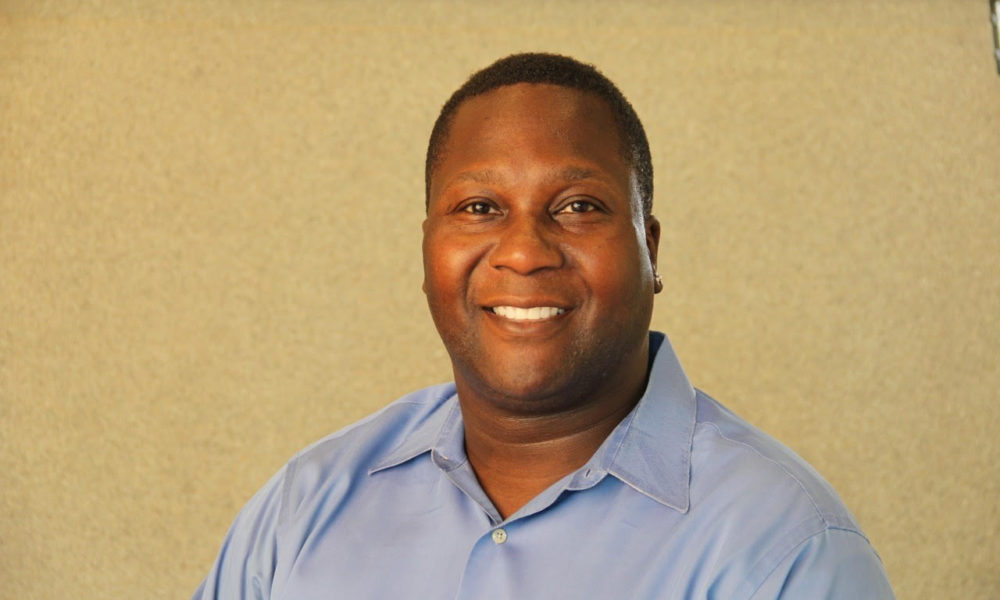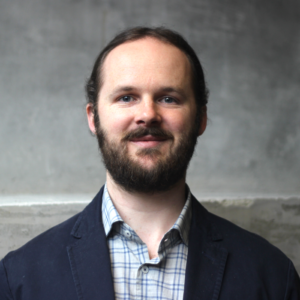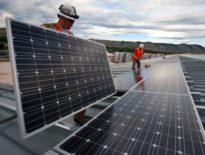Sean Bagsby currently serves as the President for the International Brotherhood of Electrical Workers (IBEW), Local 46, in Kent, WA. Mr. Bagsby also serves as a Labor Trustee for the Puget Sound Electrical Joint Apprenticeship and Training Trust (PSEJATC) located in Renton, WA, since 2008. Mr. Bagsby has been involved with several local and regional renewable energy and sustainability organizations and has been an active member of the Greater Seattle Community for over 20 years. Since 2009, Mr. Bagsby has served as the President of the Electrical Workers Minority Caucus (EWMC) Seattle Chapter. He is an appointed P.C.O. with the 47th L.D., and a Founding Member of the organization Democrats for Diversity and Inclusion (DDI).
Jack Newman: Greetings Sean. Given your long history of leadership in the energy industry and service as the elected President of the IBEW, Local 46, what is your vision for the renewable energy industry, specifically as you see it in the northwest region?
Sean Bagsby: Big picture, I see a lot of untapped potential. The solar industry has grown a lot in the Northwest, and while many people here know the challenges associated with inexpensive power, the cost of solar materials and equipment really have come down dramatically. We’re still seeing a lot of struggles regarding rebates and incentive programs, and are having a lot of battles with the typical utilities and our old-standing coal-based power that comes from the center of the US to the Northwest. We are also still seeing a lot of struggles with the wind industry, which is dominant in our region, and also with utility-scale solar projects that are coming online. There are still a lot of silos in this industry. Realizing the untapped potential in our region means thinking outside of the box; it’s the buffet approach—there’s no silver bullet when it comes to renewable energy resources.
That’s why I see continuing education and coalition building as necessary for everyone to understand the big picture solutions we need. We’re getting closer as a lot of utilities look at what their new income sources will be, especially with a general decrease in energy use as people are generating energy on their own, as home-based EV charging continues to increase, and new energy storage solutions become available. This means customers are often buying less energy from the utility, which is not going to change, so the utilities have to adapt. The answers are here, especially as storage market continues to increase and R&D advances—the innovators are also here, but we need larger tables for this conversation. Keep in mind, if we truly want what’s best for the planet, we need to get everyone at the table and we’ll all be able to get there together. I am excited with the awakening of the youth; people realize the need to face climate change and its effects—everybody is seeing it. Here in the Northwest, people get it, but we still need to focus on the solutions, not complain about the problem.
JN: You touched on a lot of really powerful examples for the Northwest. Do you see any differences, opportunities or challenges at the national and international scale? What is your vision for the renewable energy industry at that scale?
SB: Nationally, it’s the same conversation but a lot more complicated. Everyone knows our country is still very segregated in a lot of ways, and on the energy side, there are certain parts of the country where climate change deniers dominate the landscape, and coal is still “king.” In these areas, it’s a harder conversation to have, but it’s just as necessary. It’s going to take some bold, courageous leadership in order to get there, mainly to break down these silos we are dealing with. It’s going to take some serious leadership to make these changes happen and we need to set the stage for the next several hundred years.
For the big picture internationally, there’s no way around the movement to decarbonize the electric grid, although it’s going to take some serious leadership and even some sacrifice for many in the fossil fuel industry. For the benefit of the planet, and for the people that come after us, that’s where the courage comes in that I’m referring to—naturally, it’s going to take some tough conversations to move the needle.
JN: Can you talk about some of the equity issues in the clean energy economy?
SB: That’s one of the most exciting pieces about the growth in the energy industry, especially with the awakening of youth and the next generation—there is no more “box” and nothing is off the table. It’s going to take everyone to move this industry forward and everyone needs to have a place at the table; that’s the beauty of where society is right now. People are not afraid. Many people are “sick and tired of being sick and tired,” as the saying goes.
There’s no denying that underserved communities are affected by traditional energy sources, such as nuclear or oil—where they are located and the effects disproportionately trickle down to impact people of color. On the other side, people are looking for well-paid careers. It’s also true that there are fewer women and people of color involved in the energy sector, which is traditionally a Caucasian, male-dominated industry.
In Seattle, we have one of the most diverse zip codes in the nation, and we need to create space for everyone to have the opportunity to work in the energy industry.
That’s where the equity component comes into play. The approach that I take, especially with the IBEW (with its members performing electrical installations and all kinds of electrical work) is that so as long as you are a qualified, competent, and trained individual, you should have the opportunity to do this work. It doesn’t matter who someone loves, their nation of origin, their first language, how many tattoos they have, or even if they have a criminal background or history—as long as they can physically and mentally complete the job, they should be able to complete the work, and more groups need to keep that in the forefront of their hiring practices.
JN: For Zero Energy and Net Positive Energy buildings, how does an equitable workforce connect with your vision for a renewable energy powered future?
SB: That’s a nice thing I’m seeing at career fairs and as a labor trustee on our apprenticeship board. We see people, especially from the younger generation, join the electrical union, but they don’t want to work on a large concrete box downtown or a tunnel project. They’re not looking for stereotypical generic projects; instead they want to work on transformative “green” projects. They understand that there is more to electrical work than just installing solar or EV charging equipment, but they still want to work on the next generation of buildings. They want rewarding work that is helping the environment.
The next generation of Living Buildings, similar to the Bullitt Center, need to be designed to last for more than 60 years, with the ability to evolve as occupancy and technologies change. That’s what is so exciting to see with the next generation of Zero Energy buildings, people in general want to get involved. That’s honestly where I see all buildings going, and we don’t need to tear existing buildings down to get there. I see a definite increase in ZE buildings as templates are established, and as costs come down, it becomes more advantageous to the builder, owner, and operator. I have to check myself sometimes and say, “This isn’t the future. It’s the present.” although we need to create a win-win solution for all parties involved. Given the economic vitality we likely have for the next 5 – 10 years in the US, I see Zero Energy and Net Positive Energy buildings becoming the new norm for buildings, and no longer a “new and scary” prospect for developers; it will be the new way of doing business, and that’s what I look forward to.
JN: You’ve mentioned the utility sector as being a key player in the transformation of the energy industry. How can Zero Energy buildings most effectively engage the utility sector during this time of transformational change?
SB: Great, great question! One approach that I use in my work with coalition building efforts, is that it’s hard to “set the table” for these conversations with the utility sector, and everyone comes with an agenda, a way of doing business and all of their baggage. A lot of progress has been made, and there have been a lot of good conversations, but we still need more of a baseline and introductory discussions about where society is, period, and where it’s going. That way it removes the historical practices. As with all coalition building discussions, people tend to move towards where their influences lie, where their biases come from, so facilitation is key to keep the conversation on the right track and moving forward effectively. Utilities are looking at the changing density within their service territories. People’s building energy usages are changing, and society in general is more aware and contentious of their energy use and environmental impact. We now have buildings with infrastructure allowing customers to “island” themselves from the grid—either for resiliency against extreme weather events or other grid impacts—and in many places this technology is becoming a requirement.
When we look at the solutions, and in general, the utilities’ way of doing business, how can we make it work for society and the environment? For each electric service territory, how are we going to meet the demands of the people over the next 40+ years? Once we figure that out, we can determine the steps it’s going to take to get there. If we can all take the ego and personal bias out of the picture, it will be easier to stay focused on a combined agenda of serving the people and establishing a public trust for meeting their community and energy needs. We’re seeing some progress with the rest of the utilities in the Northwest looking at new, sophisticated models for how to maintain their profit generation, yet change how they provide services.
JN: You’ve also described “the awakening of the youth” as a transformational change in the clean energy economy. What is your message to the younger generation?
SB: Challenge authority—even in my union meetings I enjoy debate and tough conversation—that’s why our parliamentary process exists. The goal is to not have anyone get mad and storm out, but instead to have colorful, spirited discussions, to challenge each other, and in the end move towards a resolution.
However, young people also need to have patience. In a lot of the mentoring I deal with, young people are tired of the establishment, which reminds me of the old adage: “It’s hard to make a U-turn in a battleship.” The establishment and organized labor are like battleships. When we’re all focused on the target and moving in one direction, it’s like we’re invincible. But it’s tough to turn things around, adapt and be nimble. A lot of large industries like the utilities in the energy sector are the same way. I’d like to remind our young people that even if you’ve got good ideas, you need to stay the course. Even if you have the best idea, it takes time to implement—be prepared to stick with it. We can actually move the needle together. Sometimes it’s tough to keep the younger generation engaged to see these initiatives through to the end, and things can wither and die on the vine. We need that youthful enthusiasm to get us where we need to be, and a true coalition should have 16-year-olds and 67-year-olds.
JN: I really appreciate your thoughts on all of this, especially how the utility sector, the younger generation, and an equitable workforce can pave the way for a clean energy future. Are there any other thoughts you’d like to share?
SB: I always give a reminder that it’s going to take everybody to reach our collective goal. You and I have talked about this, Jack, that there are all these groups, committees, and industry coalitions where you start out with 20 people and end up with 12—where you’re moving along and completing some good work, but if there aren’t having those colorful conversations and possibly some disagreements, then the group isn’t big enough, inclusive enough, and you aren’t challenging the status quo. Sometimes you have to ask yourself, “Is everyone here at the table?” Remember that to innovate, you often have to make mistakes to move forward, and even stumble a little bit. If we’re all agreeing all the time, we’re not having the right conversations in my experience. Don’t take this as a threat, and try not to monopolize the power or dominate the conversation—we’re not all looking at these issues the same way. Don’t build your own silo, the person you ignore may be the person you needed most. Let’s all remember to keep the umbrella broad, and to keep challenging ourselves.



